Belgrade, Bucharest, Budapest; a trio whose popularity is on the rise in the last years, due to the fact that finally, Eastern Europe has become a real tourist attraction. The Eastern Europe Tours are designed for people looking for genuine flavors, untamed wildlife and places with a strong personality.
This Golden Triangle of Urban Eastern Europe is a must visit for anyone who appreciates interesting mixes between old and new, decay and thriving, visible changes mixed with ancient traditions. A tour in these amazing three cities will definitely have an impact on how you see the world, its progress and the way in which history shaped Eastern Europe’s destiny.
Fix Travel experts have prepared the ultimate Urban Eastern Europe Tour designed for groups and corporate travel, which can mix popular attractions with hidden gems, the old with the new, contrasts and traditions in a wonderful combination, which will amaze any single participant.
These three cities know how to make a lasting impression on their visitors, as many of them come back again drawn by the unique atmosphere, the people and the unexpected that Belgrade, Bucharest, and Budapest always deliver.
BELGRADE
A city with a tumultuous history and a modern presence, Belgrade, Serbia’s capital, is a city of contrasts, a place where the old merges with the new, offering more than a pleasant experience.
Belgrade enjoys a privileged geographical position. Located at the junction of the two big rivers: the Sava and the Danube, at the point where the Pannonian Plain meets the Balkans. The strategic position is the main reason why this city was besieged over 40 times.
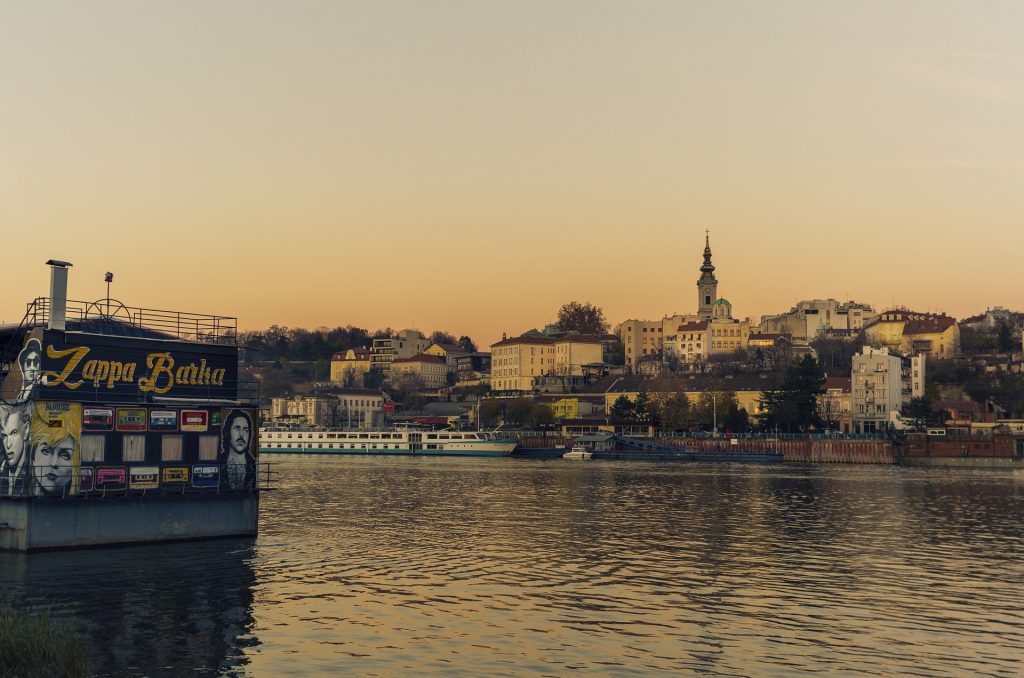 Also known as the White City, is one of the oldest cities in Europe. It was the capital of Serbia in 1403, Yugoslavia’s capital between 1918 and 2003, then Serbia and Montenegro’s, and from 2006 again, the Serbian capital. Its history began 6,000 years ago, and all stories of conflict and devastation could fill many history books. Belgrade has always succeeded to come back, to revive from the ashes and even escaped the scars of the latest conflagration, when NATO forces bombed the city for 78 days in 1999.
Also known as the White City, is one of the oldest cities in Europe. It was the capital of Serbia in 1403, Yugoslavia’s capital between 1918 and 2003, then Serbia and Montenegro’s, and from 2006 again, the Serbian capital. Its history began 6,000 years ago, and all stories of conflict and devastation could fill many history books. Belgrade has always succeeded to come back, to revive from the ashes and even escaped the scars of the latest conflagration, when NATO forces bombed the city for 78 days in 1999.
 The visitors can see almost every bit of history marked in Belgrade’s eclectic architecture: the art nouveau interwar buildings, the interesting architecture from the communist period, different from Bucharest, even a little more brutal. An important number of Belgrade Communist buildings are often photographed by science fiction lovers, and there are a number of recommendations to that effect. From the pile of bricks, which is all that remains of the militant headquarters of the militant Kneza Milosa, to nightclubs under the Kalemegdan citadel, the capital of Serbia offers plenty of experiences. The Serbs are building in every corner of the city as the wounds of the last wars are almost healed.
The visitors can see almost every bit of history marked in Belgrade’s eclectic architecture: the art nouveau interwar buildings, the interesting architecture from the communist period, different from Bucharest, even a little more brutal. An important number of Belgrade Communist buildings are often photographed by science fiction lovers, and there are a number of recommendations to that effect. From the pile of bricks, which is all that remains of the militant headquarters of the militant Kneza Milosa, to nightclubs under the Kalemegdan citadel, the capital of Serbia offers plenty of experiences. The Serbs are building in every corner of the city as the wounds of the last wars are almost healed.
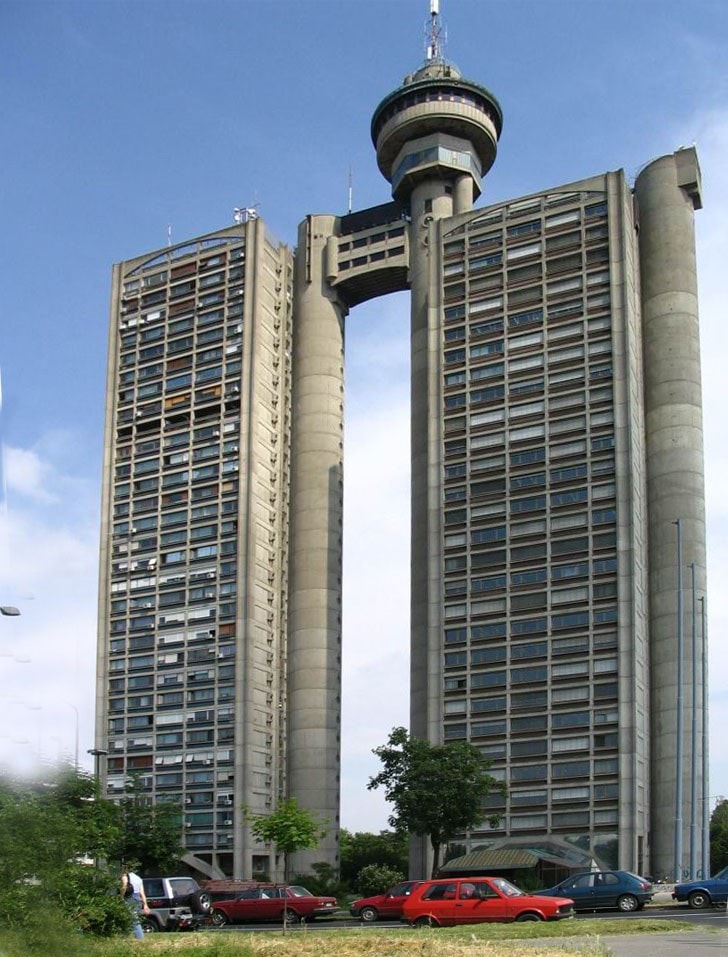 However, this beautiful city will seduce you with its great vistas, with its friendly and outgoing people, who know how to enjoy life, with the Blue Danube and its thriving modern art community. In case you did not know, the modern art feels at home in Belgrade and there are great contemporary art galleries in places you would never expect.
However, this beautiful city will seduce you with its great vistas, with its friendly and outgoing people, who know how to enjoy life, with the Blue Danube and its thriving modern art community. In case you did not know, the modern art feels at home in Belgrade and there are great contemporary art galleries in places you would never expect.
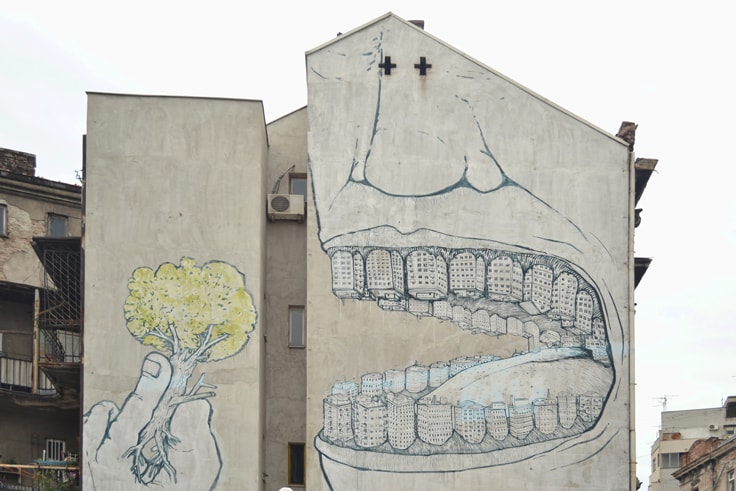
Belgrade Top Attractions
The Kalmegdan Fortress is the place that resisted time and to over 115 bloody battles, according to the historians. Its construction began in the Celtic era, and then the Romans completed the construction that was destroyed and reconstructed more than 40 times. The current state of the edifice is what remained after the fortress was strengthened and rebuilt in the time of the Austro-Hungarian Empire.
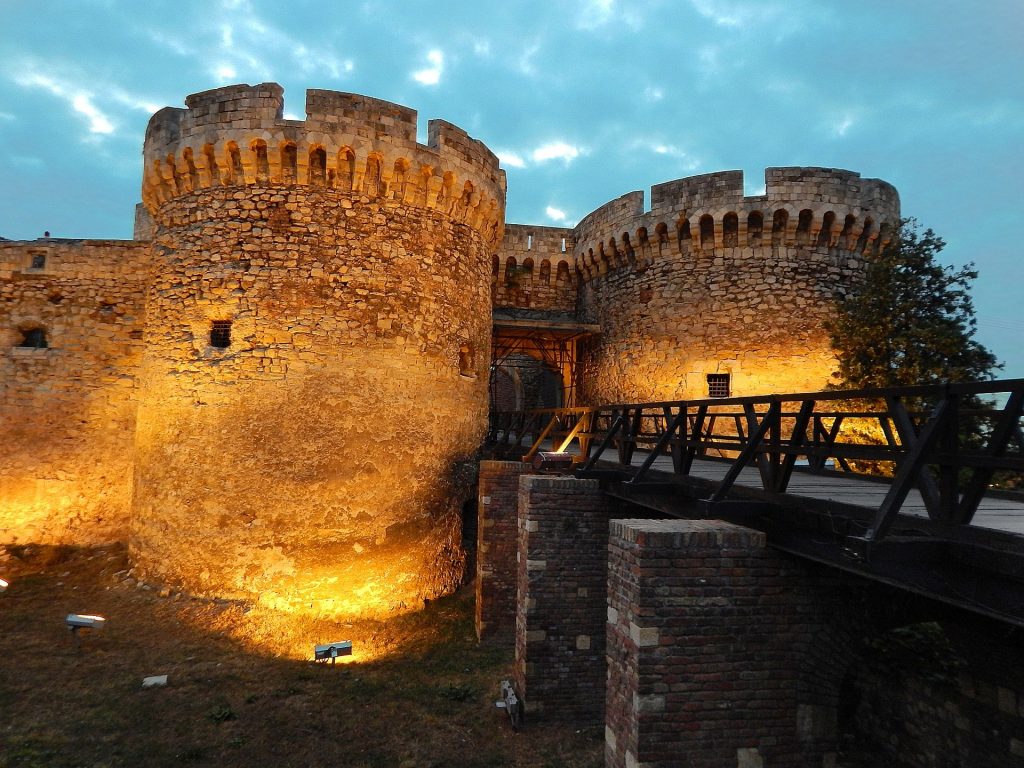
Inside the fortress, you can visit the Military Museum, the Clock Tower (27.5 m high) or the Roman water well (60 m deep) and you can enjoy a coffee in the many Serbian cafes and restaurants nearby. At the Military Museum, you can see weapons and bombs from the recent Yugoslav War, but also the remains of the “invisible” American bomber that was knocked down by the Serbs during the conflict.
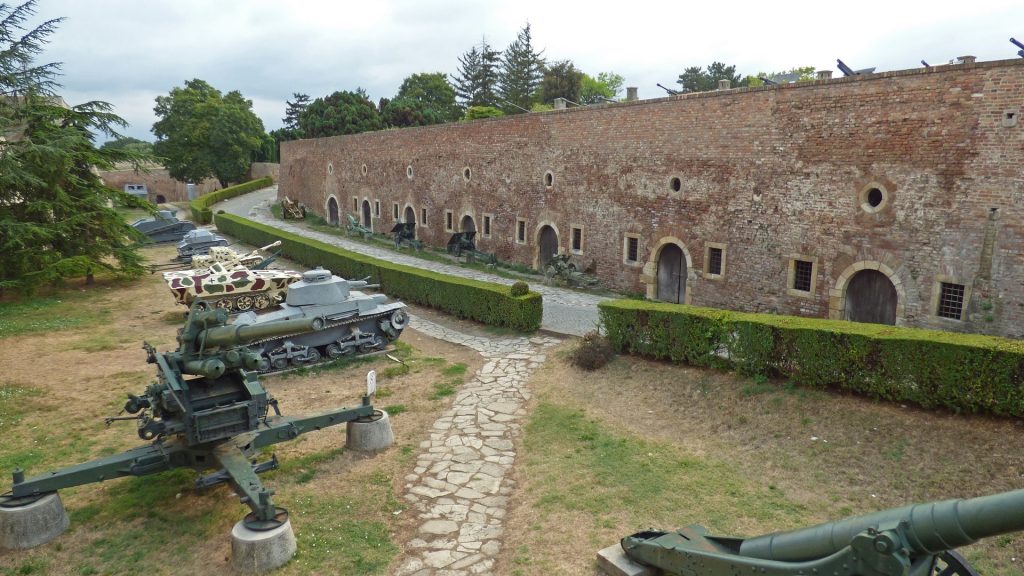
Iosip Broz Tito’s mausoleum is another popular tourist destination in Belgrade. This is the last great communist president for the Serbs; although he was a dictator himself, he imposed a different regime than Ceausescu in Romania. During the communists, the Serbs had access to information, they had the right to travel anywhere in the world and they could owe foreign currency. In addition, Tito had in his hands a federation of states that, shortly after his death and the fall of the Iron Curtain, broke down after the internal war in the former Yugoslavia. The Mausoleum is an annex of the Serbian History Museum, which shows the evolution of Serbs in images, works, or artifacts.
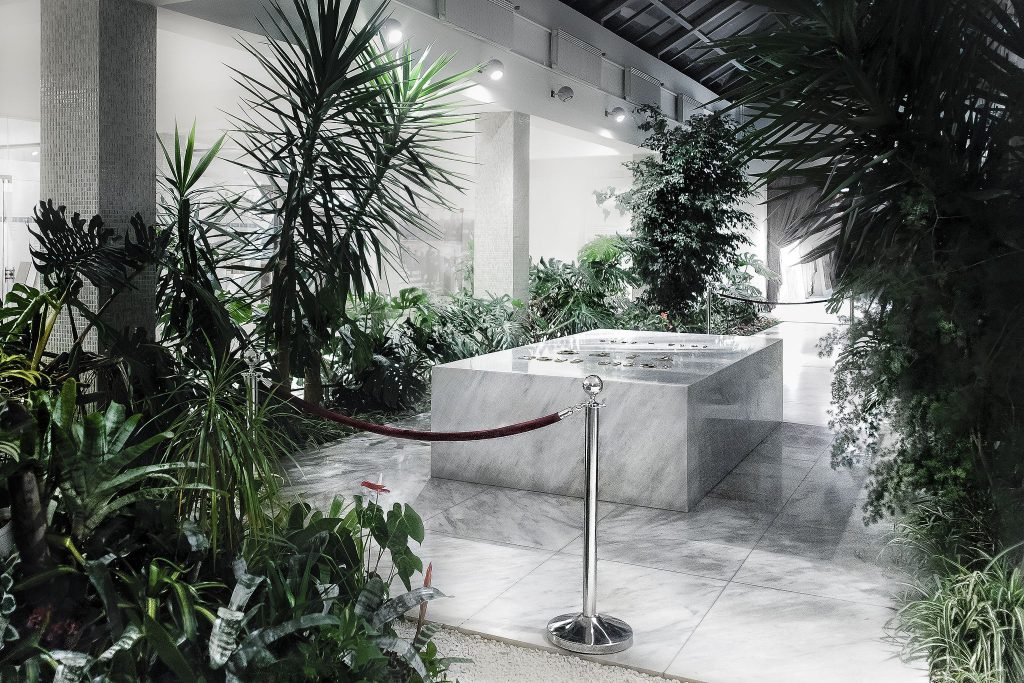 The Royal Serbian Court is an area located on the highest point in Belgrade, on Dedinje Hill, occupying 134 hectares of green areas, gardens, and parks. The outdoor areas were designed by Eduard Andre, the same architect who had developed the design of the Versailles gardens. Within the Royal Court’s perimeter, you can visit two palaces: the Royal Palace and the White Palace.
The Royal Serbian Court is an area located on the highest point in Belgrade, on Dedinje Hill, occupying 134 hectares of green areas, gardens, and parks. The outdoor areas were designed by Eduard Andre, the same architect who had developed the design of the Versailles gardens. Within the Royal Court’s perimeter, you can visit two palaces: the Royal Palace and the White Palace.
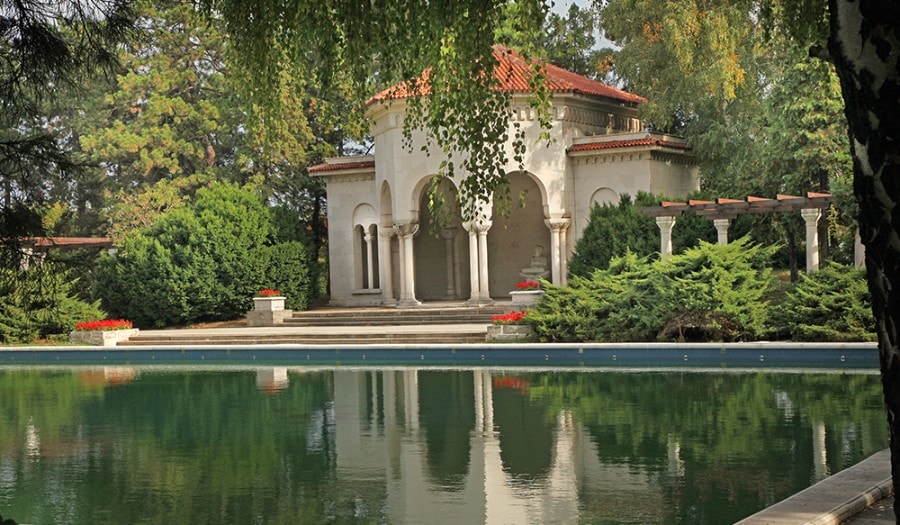
The Royal Palace was built between 1924 and 1929 in Byzantine-Serbian style by King Alexander I. The interior of the palace is splendid, worthy of a great king reigning over the Serbs at that time.
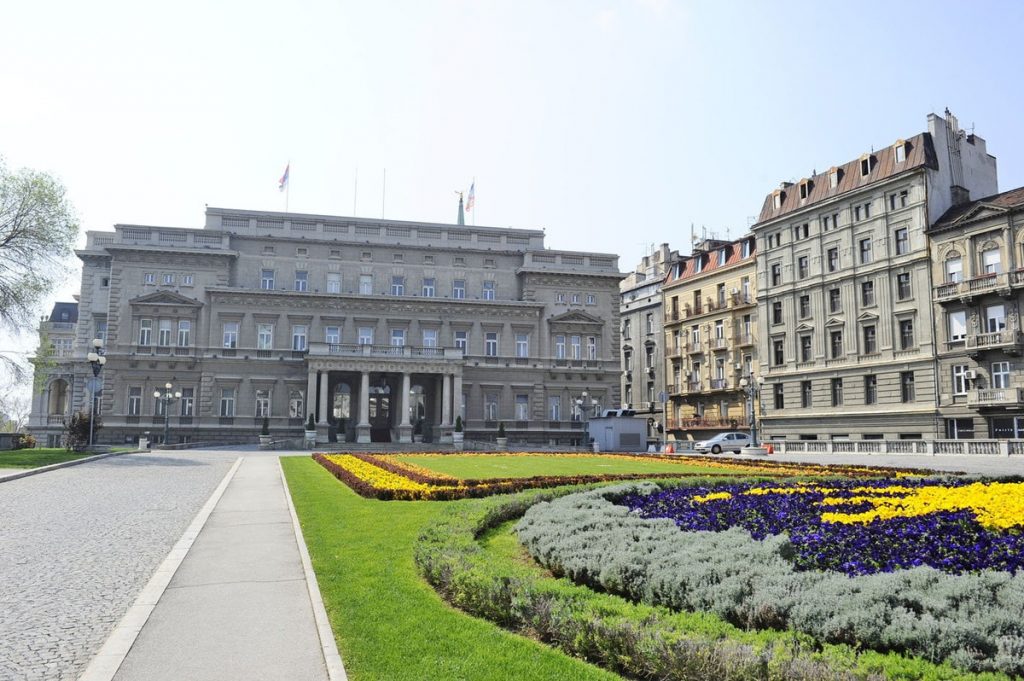 In the same complex, you can also visit the White Palace (Beli Dvor), whose construction was started by King Alexander I. His intent was to raise a palace for his three sons, so they could live there after becoming adults. As the King was assassinated in Marseille in 1934, he could not see his finished work, but his sons continued the construction. This beautiful palace can be admired today, with its splendid rooms decorated in the luxurious Ludovic XV and Ludovic XVI style.
In the same complex, you can also visit the White Palace (Beli Dvor), whose construction was started by King Alexander I. His intent was to raise a palace for his three sons, so they could live there after becoming adults. As the King was assassinated in Marseille in 1934, he could not see his finished work, but his sons continued the construction. This beautiful palace can be admired today, with its splendid rooms decorated in the luxurious Ludovic XV and Ludovic XVI style.
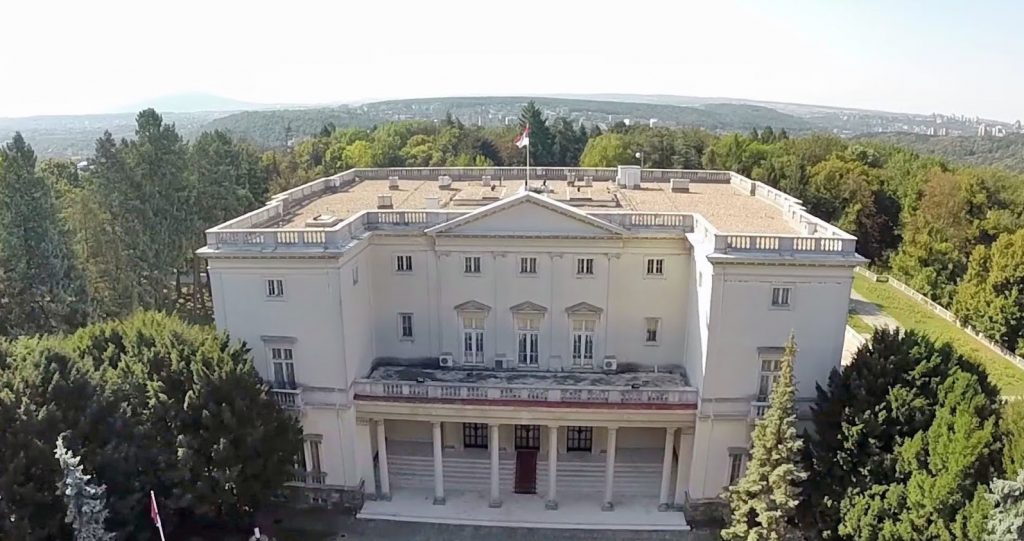 Another beautiful palace is Princess Ljubica’s palace, built in 1831, in Oriental style for Prince Milos’s wife.
Another beautiful palace is Princess Ljubica’s palace, built in 1831, in Oriental style for Prince Milos’s wife.
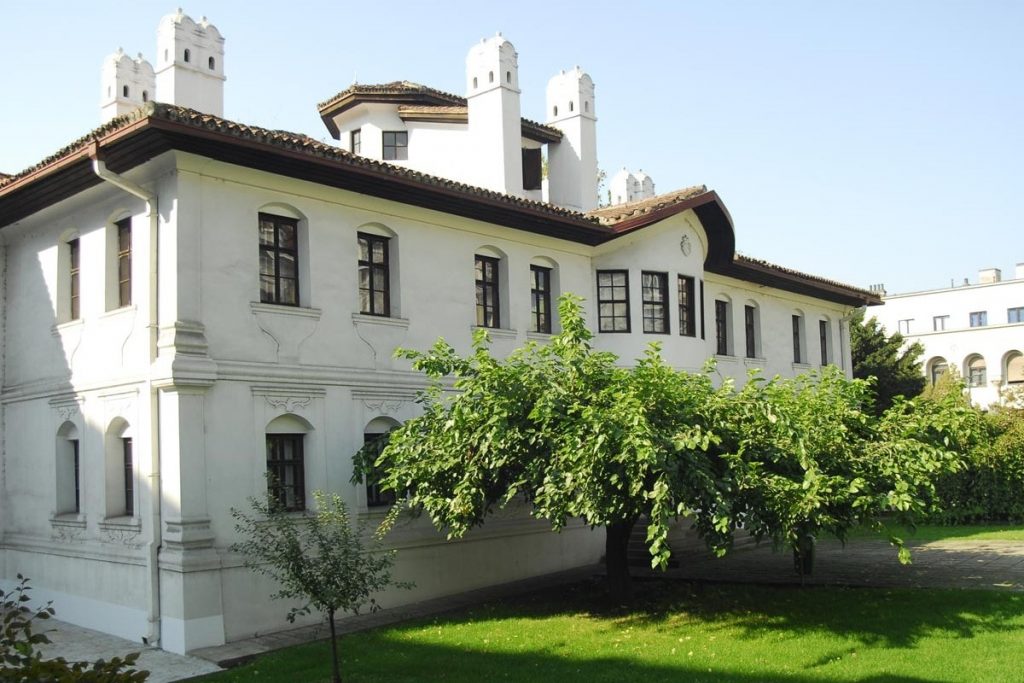 Built on the site where the Turks burned the remains of St. Sava, Sveti Sava Temple is a major tourist destination of Belgrade, as it is the largest Orthodox church in the Balkans and the second largest Orthodox church in the world!
Built on the site where the Turks burned the remains of St. Sava, Sveti Sava Temple is a major tourist destination of Belgrade, as it is the largest Orthodox church in the Balkans and the second largest Orthodox church in the world!
 For all the Contemporary Art aficionados, Belgrade is a great destination. Painting and sculpture sections, displaying local artists as well as an admirable selection of famous names – Andy Warhol, Joan Miro, Salvador Dali – along with photography and graphics, a generous collection of New Media, a rich library of books and art catalogs (more than 4,800 volumes and no fewer than 28,000 catalogs worldwide), an archive of articles and a photographic items, it seems that the Contemporary Art Museum in Belgrade deserves its reputation!
For all the Contemporary Art aficionados, Belgrade is a great destination. Painting and sculpture sections, displaying local artists as well as an admirable selection of famous names – Andy Warhol, Joan Miro, Salvador Dali – along with photography and graphics, a generous collection of New Media, a rich library of books and art catalogs (more than 4,800 volumes and no fewer than 28,000 catalogs worldwide), an archive of articles and a photographic items, it seems that the Contemporary Art Museum in Belgrade deserves its reputation!
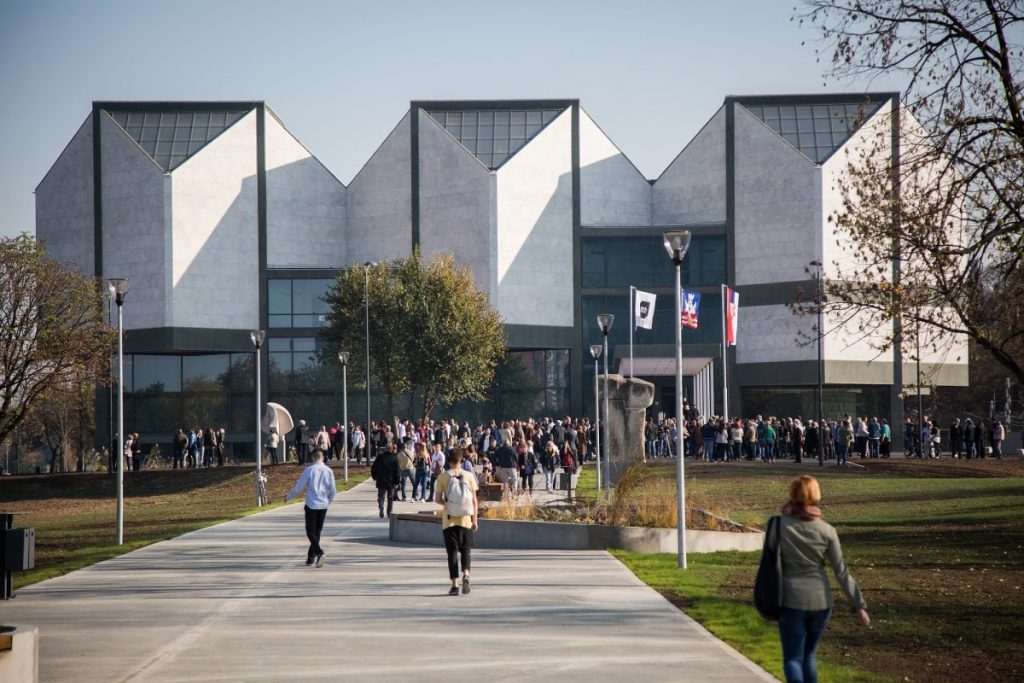 Highly appreciated by connoisseurs mainly due to the collection of paintings from Serbia and the former Yugoslavia since 1900 until now, considered as the first important cultural objective of the city and the country, it was founded in 1958 as a modern art museum and reopened in 2017 in a new concept.
Highly appreciated by connoisseurs mainly due to the collection of paintings from Serbia and the former Yugoslavia since 1900 until now, considered as the first important cultural objective of the city and the country, it was founded in 1958 as a modern art museum and reopened in 2017 in a new concept.
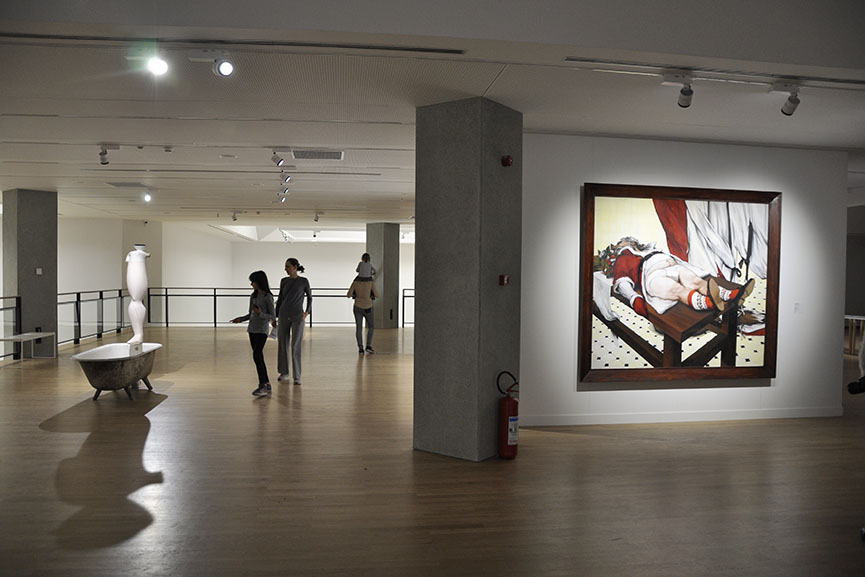 A splendid tower built in 1896, the Janko Sibinjanin Tower or the Millennium Tower is another tourist attraction both for its exterior beauty and its age and for the fact that today the Tower houses modern art galleries and exhibitions.
A splendid tower built in 1896, the Janko Sibinjanin Tower or the Millennium Tower is another tourist attraction both for its exterior beauty and its age and for the fact that today the Tower houses modern art galleries and exhibitions.

For the gourmands, there are some tasty Serbian culinary specialties, such as burek pie, Serbian pljeskavica (a sort of meatball in a bun, which, according to local legends, would be the ancestor of the hamburger) and, of course, the Serbs “čevapčići”. The latter is served differently in every Balkan country. In Belgrade, the small pieces of meat are not accompanied by mustard, like in Romania, but baked in bread, served on a plate of vegetables or sprinkled with yogurt. They represent an entire culinary epic journey started in the Muslim world, which has acquired various forms in Bulgaria, Bosnia, Serbia, and Romania.

For vegetarians, we recommend the spicy Serbian salad. Among the specific beverages, anyone should try the local beer, the traditional rakija, a strong drink, compared to the Romanian “tuica”.
 When it comes to partying, Eastern Europe is the place to be! There is something for everybody. Belgrade has a variety of pubs concentrated in the central area. The places where you can spend the evening with friends are named generic “kafana”. Very popular are the “floating kafanas” on the Sava or the Danube.
When it comes to partying, Eastern Europe is the place to be! There is something for everybody. Belgrade has a variety of pubs concentrated in the central area. The places where you can spend the evening with friends are named generic “kafana”. Very popular are the “floating kafanas” on the Sava or the Danube.
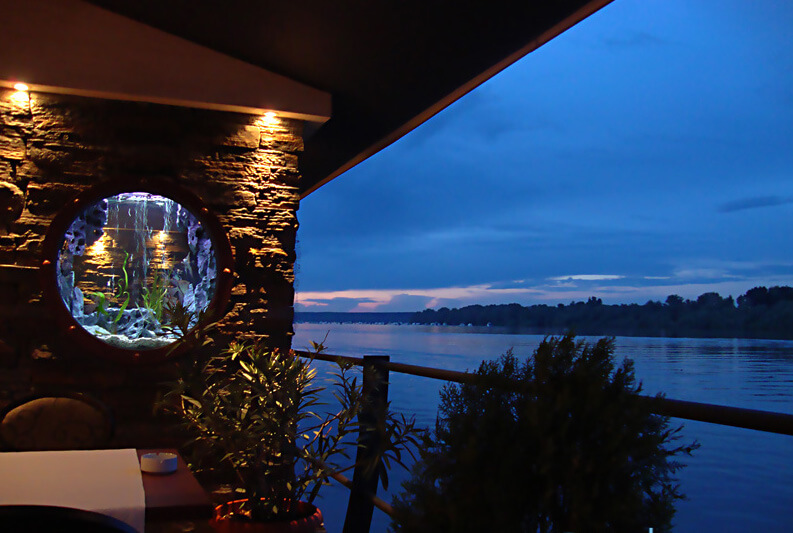 Also known as the Montmartre of Belgrade, Skadarlija Street was the meeting point for writers and artists in the old days. Today, it is always crowded and filled with young people. Many of the restaurants and terraces also benefit from the accompaniment of traditional Serbian music orchestras.
Also known as the Montmartre of Belgrade, Skadarlija Street was the meeting point for writers and artists in the old days. Today, it is always crowded and filled with young people. Many of the restaurants and terraces also benefit from the accompaniment of traditional Serbian music orchestras.
BUCHAREST
Everybody seems to have an opinion on the Romanian capital. However, the majority of foreign travelers admit that Bucharest is undoubtedly the best-kept secret of Europe. You can find plenty of restaurants, bars, art galleries and museums in every recently renovated street corner. Travelers gradually discover its hidden gems at the same time while being attracted by Bucharest’s mysterious character.
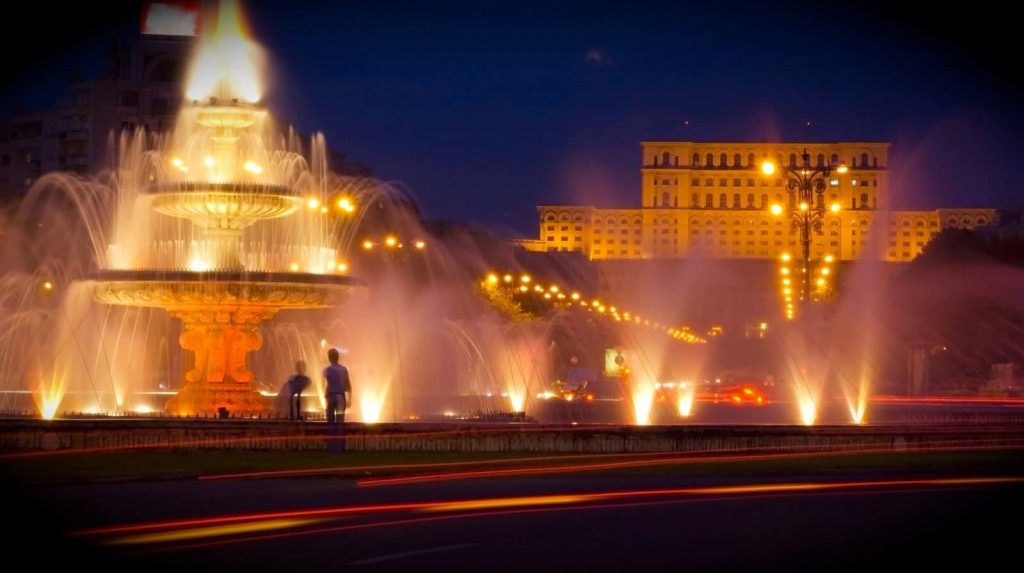 The past and the present coexist communist buildings, glass offices bordered by high ceiling stores and cafes that retain the Parisian charm of several decades. Bucharest’s treasures deserve to be hunted, and visitors will find in their search a place full of warmth and personality. Welcome to Bucharest!
The past and the present coexist communist buildings, glass offices bordered by high ceiling stores and cafes that retain the Parisian charm of several decades. Bucharest’s treasures deserve to be hunted, and visitors will find in their search a place full of warmth and personality. Welcome to Bucharest!
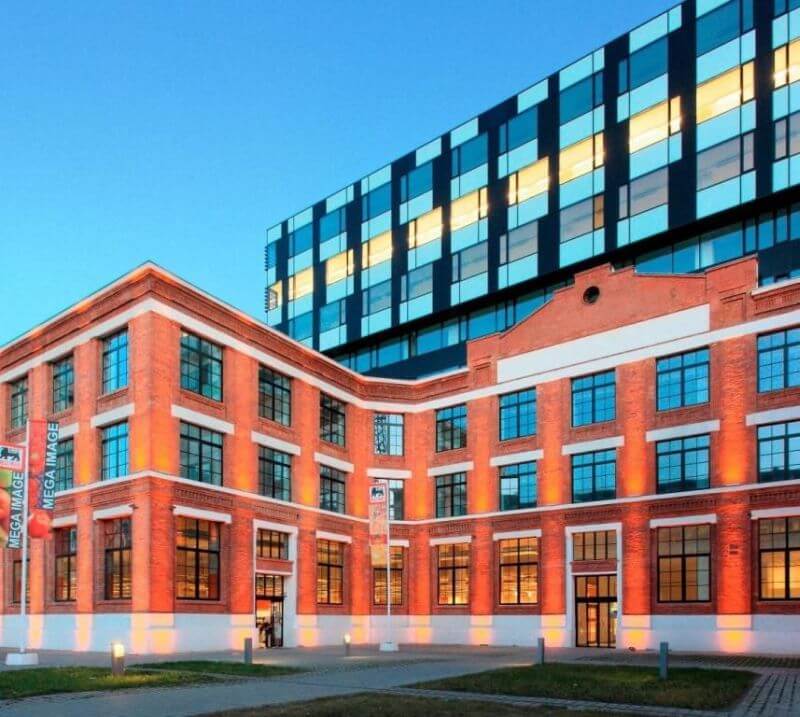 In the recent years, Bucharest has become a popular DMC destination, as it has so many accommodation and a great variety of venue options, from palaces to modern clubs, unconventional urban halls to beautiful gardens; there is a place and time for any kind of event. There is always something to do, to see, to taste or to try in Bucharest.
In the recent years, Bucharest has become a popular DMC destination, as it has so many accommodation and a great variety of venue options, from palaces to modern clubs, unconventional urban halls to beautiful gardens; there is a place and time for any kind of event. There is always something to do, to see, to taste or to try in Bucharest.
 In the 20th century, Bucharest was known as Little Paris of the East due to its Art Nouveau architecture and impressive buildings inspired by the French ones, but its grandeur was blurred by the addition of utilitarian buildings resulting from decades of communism. Even if the city does not have that classical beauty, the mix of architecture makes it unique.
In the 20th century, Bucharest was known as Little Paris of the East due to its Art Nouveau architecture and impressive buildings inspired by the French ones, but its grandeur was blurred by the addition of utilitarian buildings resulting from decades of communism. Even if the city does not have that classical beauty, the mix of architecture makes it unique.
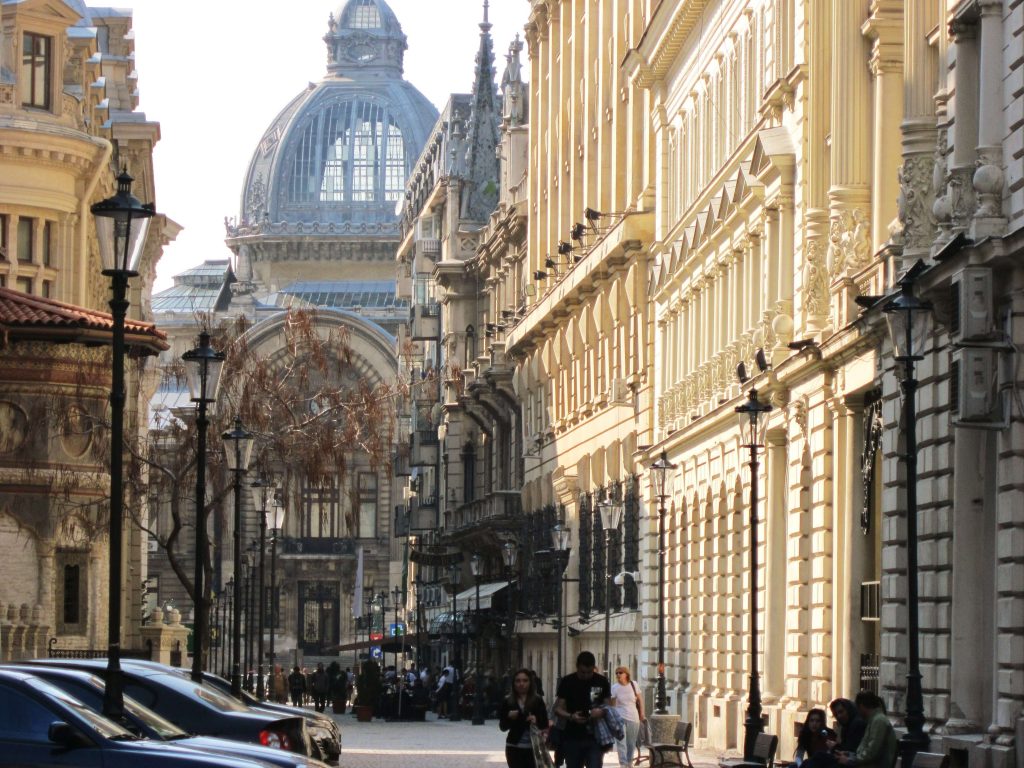
As a DMC based in Bucharest, we have prepared a wider range of top attractions so that you can discover and love this city as much as we do!
Bucharest Top Attractions
The Arch of Triumph. The Arc de Triumph in Bucharest is one of the symbols of the city and one of the reasons for which this Eastern Europe city has been compared to Paris. Used today only for military parades and celebrations, the Arch of Triumph in Bucharest is one of the most photographed tourist attractions in the city. At its foot lies one of the most beautiful boulevards in Bucharest, but not as famous as the Champs Elysees. Kiseleff Boulevard connects the Arch of Triumph with Victoria Square. On this large boulevard and the adjacent streets can be seen many old houses, the villas of Old Bucharest.
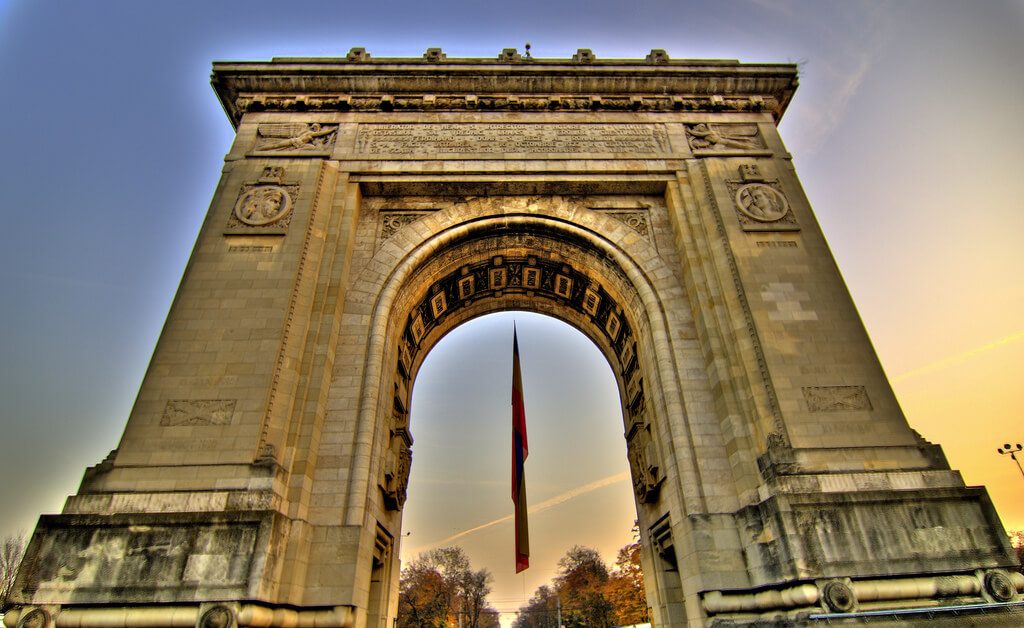 The Palace of Parliament or the House of People is the heaviest building in the world and the 2nd largest administrative building in the world, after the Pentagon. It has 9 surface and 9 underground levels, 2 subatomic shelters and more than 1000 rooms, covering an area of over 300.000 sqm. Its construction is considered one of the 7 wonders of the modern world and it draws every year thousands of visitors. After visiting this megastructure you will understand better the Romanian history. Make sure you also visit its roof terrace for stunning vistas over the city, which is part of the National Contemporary Art Museum.
The Palace of Parliament or the House of People is the heaviest building in the world and the 2nd largest administrative building in the world, after the Pentagon. It has 9 surface and 9 underground levels, 2 subatomic shelters and more than 1000 rooms, covering an area of over 300.000 sqm. Its construction is considered one of the 7 wonders of the modern world and it draws every year thousands of visitors. After visiting this megastructure you will understand better the Romanian history. Make sure you also visit its roof terrace for stunning vistas over the city, which is part of the National Contemporary Art Museum.
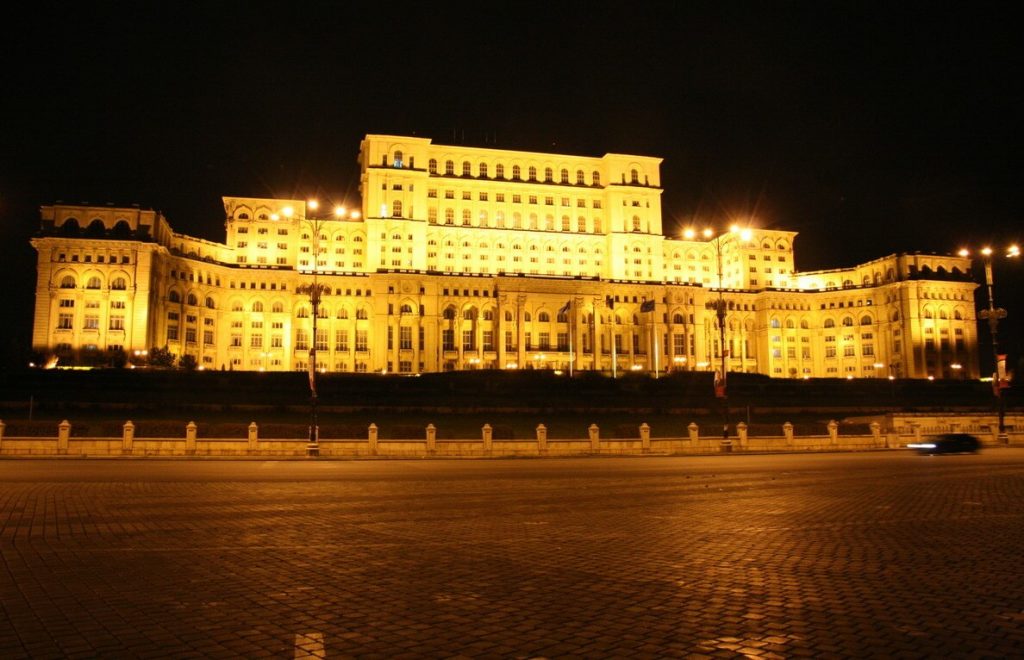 The Romanian Athenaeum is the symbol of Romania’s national culture and it was built between 1886-1888 with money from a public subscription. The building is an architectural jewel and it was inspired by the Greek temples. This is the place where the most important Romanian musicians launched their career: George Enescu, Ion Voicu, Lola Bobescu, Radu Aldulescu, and many others. The Romanian Atheneum hosts also the most prestigious festivals and concerts of classical music in Romania.
The Romanian Athenaeum is the symbol of Romania’s national culture and it was built between 1886-1888 with money from a public subscription. The building is an architectural jewel and it was inspired by the Greek temples. This is the place where the most important Romanian musicians launched their career: George Enescu, Ion Voicu, Lola Bobescu, Radu Aldulescu, and many others. The Romanian Atheneum hosts also the most prestigious festivals and concerts of classical music in Romania.
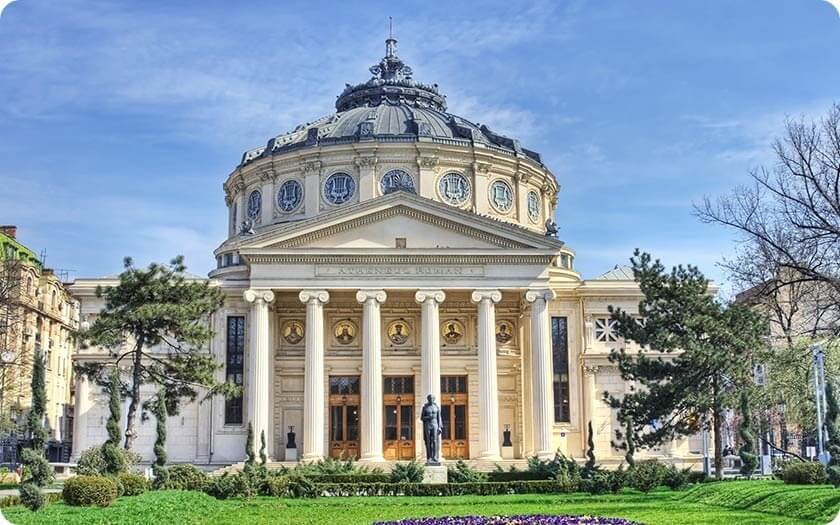 Revolution Square. Communism fell into one of the most beautiful squares of Bucharest. Here you can admire besides the Romanian Athenaeum, the Royal Palace (including the Palace Hall and the small Palace Hall), the University Library and the Monument of the Revolutionary Heroes together with Maniu’s statue and the fountains behind it. The Creţulescu Church, one of the oldest in Bucharest, is located just outside the Royal Palace.
Revolution Square. Communism fell into one of the most beautiful squares of Bucharest. Here you can admire besides the Romanian Athenaeum, the Royal Palace (including the Palace Hall and the small Palace Hall), the University Library and the Monument of the Revolutionary Heroes together with Maniu’s statue and the fountains behind it. The Creţulescu Church, one of the oldest in Bucharest, is located just outside the Royal Palace.
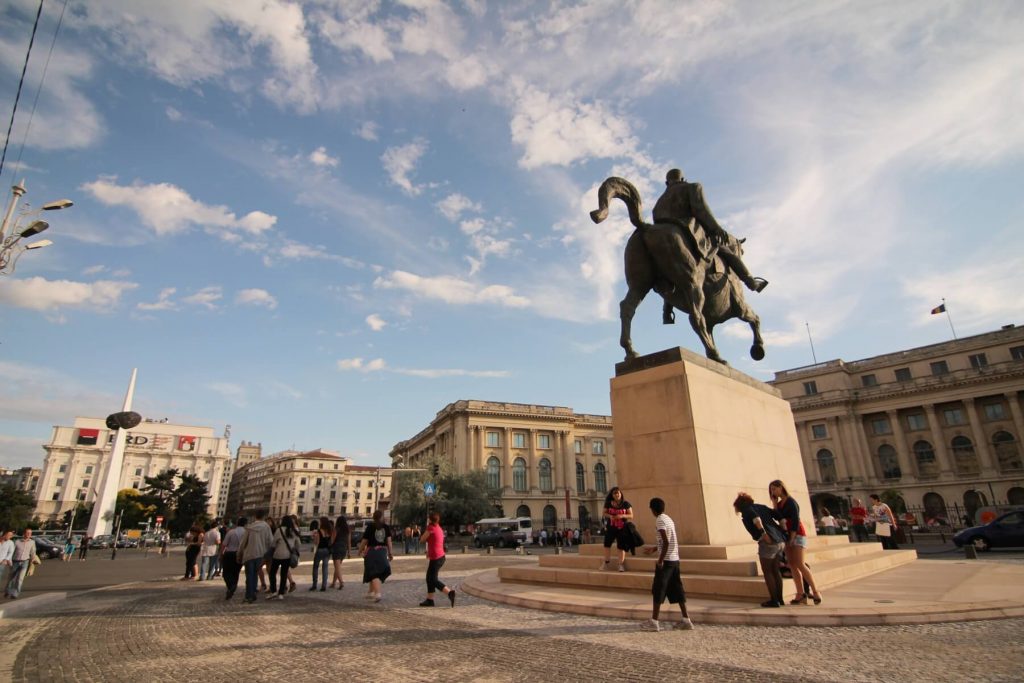 There are many old churches and monasteries in Bucharest and you will find them near the town center, such as Stavropoleus, Saint George and Coltea Churches, Domnita Balasa Church, Saint Spiridon the New Church, The Russian Church, Bucur Ciobanul Church, Schitul Darvari Church, Radu Voda Monastery or the Patriarchal Cathedral and Palace. There are all easily accessible as they are located in the middle of the city.
There are many old churches and monasteries in Bucharest and you will find them near the town center, such as Stavropoleus, Saint George and Coltea Churches, Domnita Balasa Church, Saint Spiridon the New Church, The Russian Church, Bucur Ciobanul Church, Schitul Darvari Church, Radu Voda Monastery or the Patriarchal Cathedral and Palace. There are all easily accessible as they are located in the middle of the city.

However, Bucharest is most appreciated for its lively nightlife. Its Old Town consists of what has been conserved after the destructions of 2nd World War and the communist flagella. It concentrates some of the best restaurants, pubs, and clubs in Bucharest, including Manuc’s Inn (the oldest operating hotel in Bucharest ), as well as the oldest feudal monument in Bucharest, the residence of the Wallachian princes or one of the most beautiful bookstores in Eastern Europe.
 Although it might seem grey from the outside, Bucharest is a green city, with plenty of parks and gardens scattered across the city and even an urban delta. The old romantic garden of Cismigiu, the chic Carol Park or the Botanical Garden still hold the charm of old Bucharest, while Herastrau Park, the biggest in the city, hosts one of the trendiest and finest restaurants and high profile clubs in the city, a palace and also the Village Museum.
Although it might seem grey from the outside, Bucharest is a green city, with plenty of parks and gardens scattered across the city and even an urban delta. The old romantic garden of Cismigiu, the chic Carol Park or the Botanical Garden still hold the charm of old Bucharest, while Herastrau Park, the biggest in the city, hosts one of the trendiest and finest restaurants and high profile clubs in the city, a palace and also the Village Museum.
 The urban Vacaresti Delta (very close to another big park of Bucharest, Tineretului Park) is home for over 150 species of birds, 331 species of plants, plus mammals, reptiles, mollusks, fish, amphibians, and insects.
The urban Vacaresti Delta (very close to another big park of Bucharest, Tineretului Park) is home for over 150 species of birds, 331 species of plants, plus mammals, reptiles, mollusks, fish, amphibians, and insects.
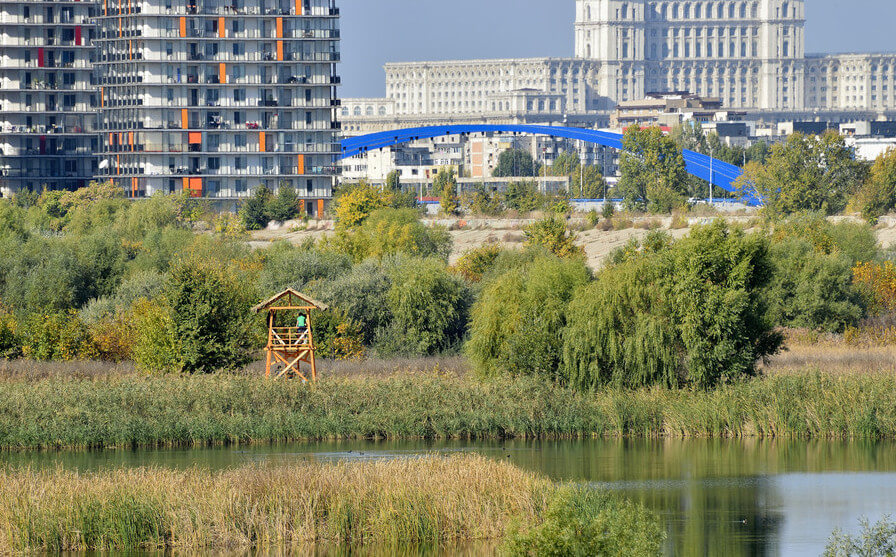 Bucharest has many cool and interesting locations, a mesmerizing and sometimes confusing mix of different places belonging to different eras. You have to experience it to believe it! Bucharest is cosmopolitan, resourceful and insists to fight to gain its well-deserved place in the top attractions of Eastern Europe, as it has something to offer for each of its visitors.
Bucharest has many cool and interesting locations, a mesmerizing and sometimes confusing mix of different places belonging to different eras. You have to experience it to believe it! Bucharest is cosmopolitan, resourceful and insists to fight to gain its well-deserved place in the top attractions of Eastern Europe, as it has something to offer for each of its visitors.
BUDAPEST
Close to the Romanian capital, at only one hour flight is one of the most beautiful cities of Europe: Budapest. Also known as “Danube’s Pearl” or “Danube’s Bride”, Budapest is grand, impressive and elegant.
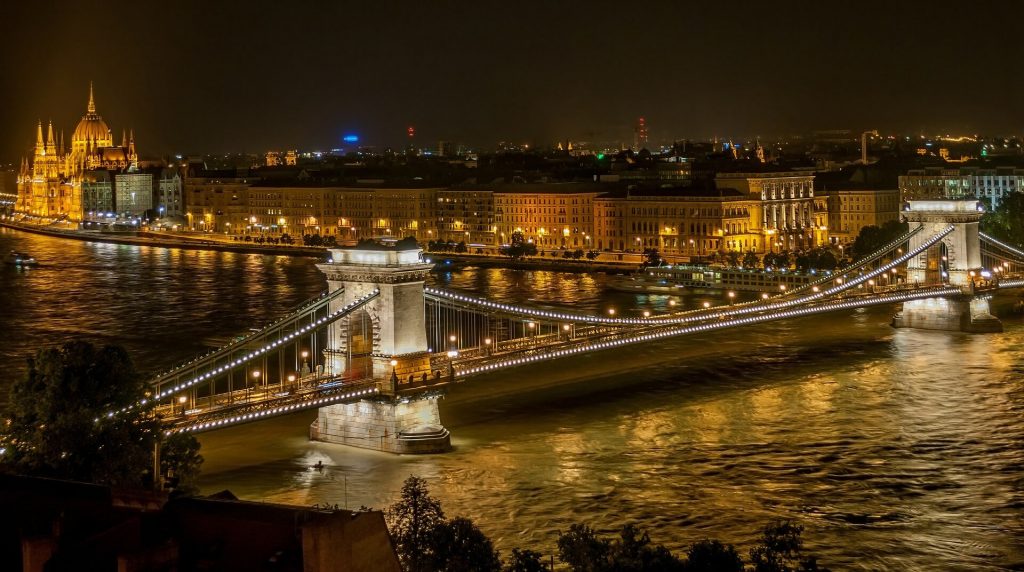 In the beginning, there were three towns: Buda (established by Celts on the right bank of the Danube), Peste (dating back to 1148, on the left bank of Danube) and Óbuda (established as the Hungarian capital by King Béla IV) who merged in 1872 to form Budapest. Today, the Hungarian capital occupies a territory of 525 km² and it attracts over 20 million visitors annually, with its countless historic sites, museums, art galleries, and its famous thermal SPAS.
In the beginning, there were three towns: Buda (established by Celts on the right bank of the Danube), Peste (dating back to 1148, on the left bank of Danube) and Óbuda (established as the Hungarian capital by King Béla IV) who merged in 1872 to form Budapest. Today, the Hungarian capital occupies a territory of 525 km² and it attracts over 20 million visitors annually, with its countless historic sites, museums, art galleries, and its famous thermal SPAS.
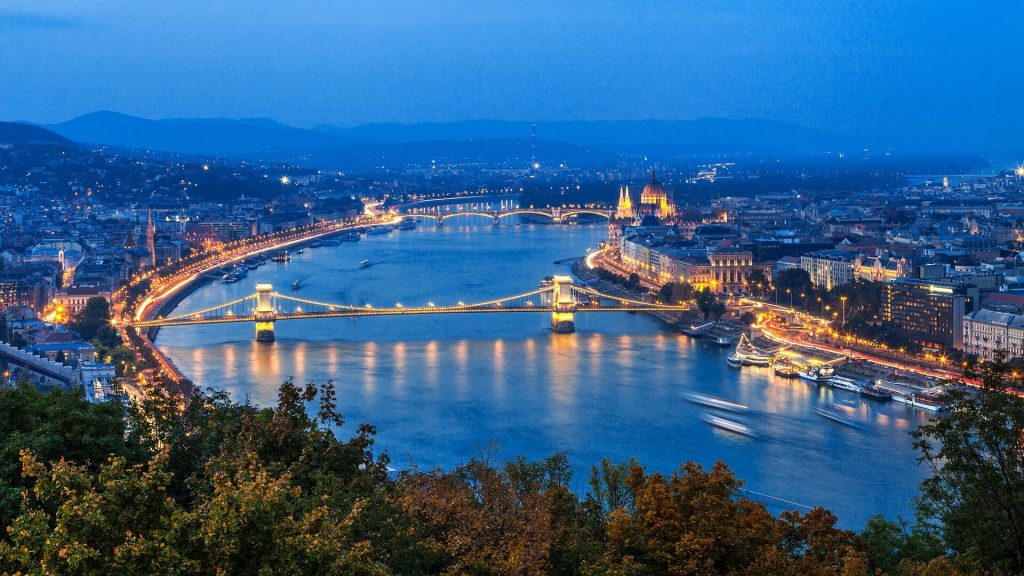
The city is divided by the Danube, which crosses the Hungarian capital in the north-south direction. The contrast is obvious and geographically, on the right side of the river, there are hills, mountains; and on the left side of the Peste Plain, with small dips to the northeast.
 Buda is the residential and resting area of the capital, with economic areas in the north and south, and Pesta is the administrative, commercial and industrial center., with large residential districts and great entertainment venues.
Buda is the residential and resting area of the capital, with economic areas in the north and south, and Pesta is the administrative, commercial and industrial center., with large residential districts and great entertainment venues.
Budapest Top Attractions
Definitely the most beautiful building in the whole city, the Parliament building can be admired from a lot of places in the city. Inaugurated in 1886 to mark the 1000th anniversary of the nation (then Hungary was part of the Austro-Hungarian Empire), the building has 691 rooms and not less than 19 kilometers of corridors and stairs.
 There are nine bridges across the Danube, and Budapest is also known as the Capital of the 9 Bridges. These bridges are Árpád Bridge, The Chain Bridge, The Elizabeth Bridge, The Bridge of Freedom, Margaret Bridge, Megyeri Bridge, Petőfi Bridge, Rákóczi Bridge, and The North Railway Bridge. Every one of them has its charm, and the most pleasant way to admire them is by taking a Danube cruise.
There are nine bridges across the Danube, and Budapest is also known as the Capital of the 9 Bridges. These bridges are Árpád Bridge, The Chain Bridge, The Elizabeth Bridge, The Bridge of Freedom, Margaret Bridge, Megyeri Bridge, Petőfi Bridge, Rákóczi Bridge, and The North Railway Bridge. Every one of them has its charm, and the most pleasant way to admire them is by taking a Danube cruise.
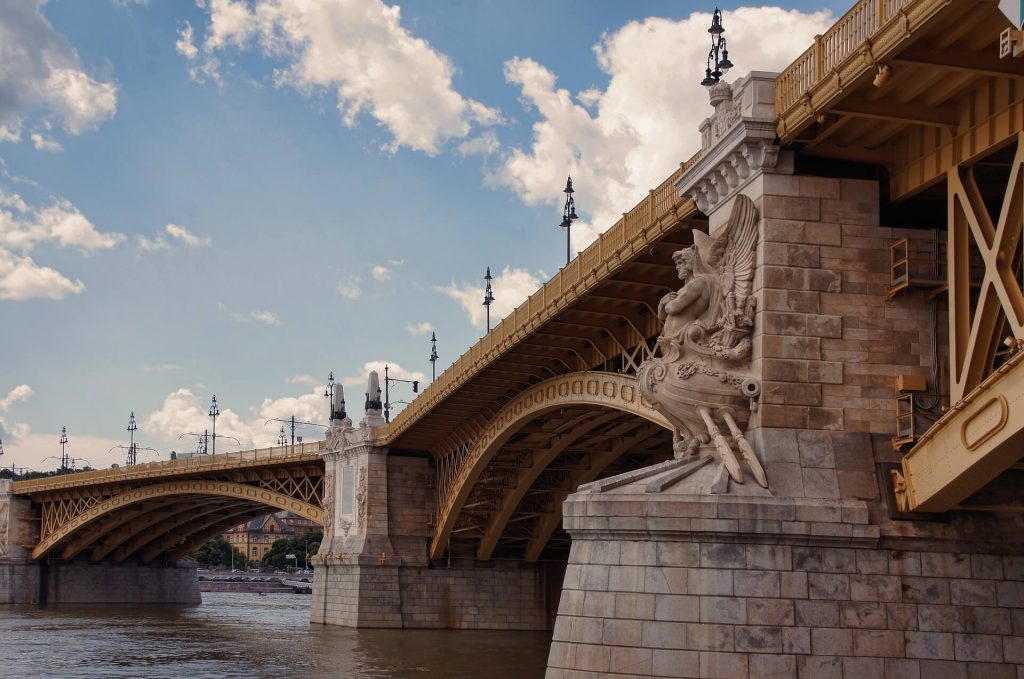
St. Stephen’s Basilica is the most important church in all of Hungary, as here there is the right arm of King Stephen the Holy, the founder of the Hungarian State. The Great Synagogue, on the other hand, is declared the most beautiful synagogue in the world and the second largest after the one in New York City.
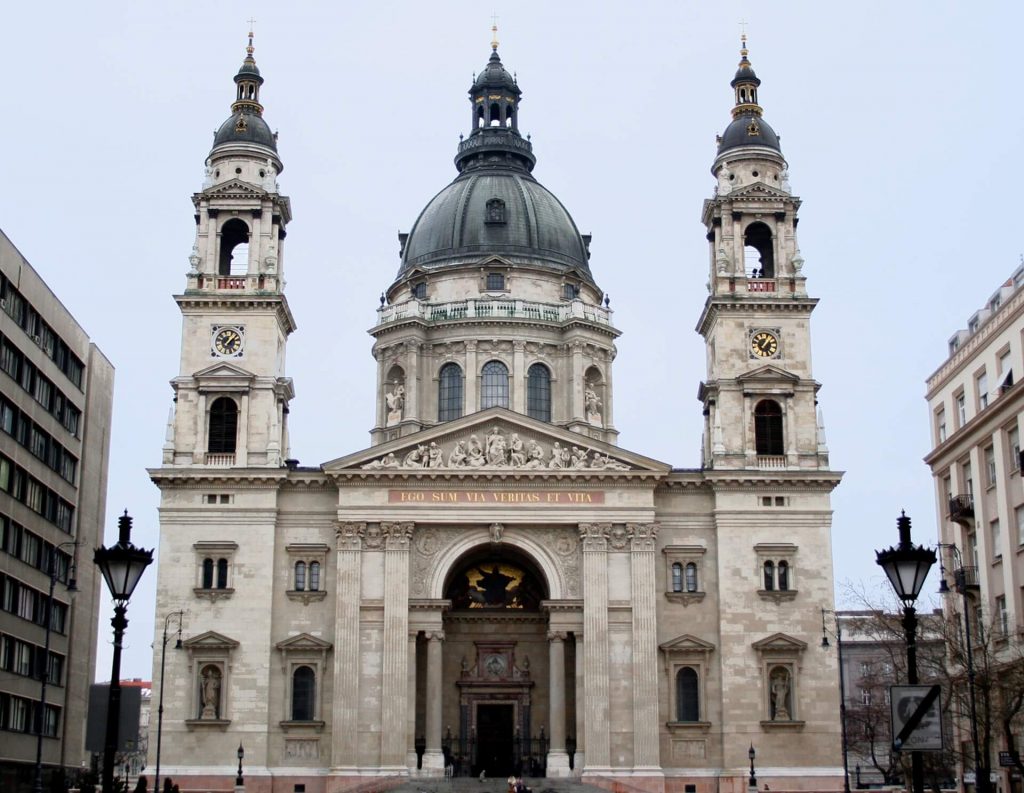 The Buda Castle is, in fact, a complex of palaces and the castles belonging to the Austro-Hungarian kings. It was built in 1925 at the command of King Bela IV. There is plenty to see and visit here, including the National Gallery. And, if you’re in the right time of the year, you can experience some of the festivals which take place here.
The Buda Castle is, in fact, a complex of palaces and the castles belonging to the Austro-Hungarian kings. It was built in 1925 at the command of King Bela IV. There is plenty to see and visit here, including the National Gallery. And, if you’re in the right time of the year, you can experience some of the festivals which take place here.
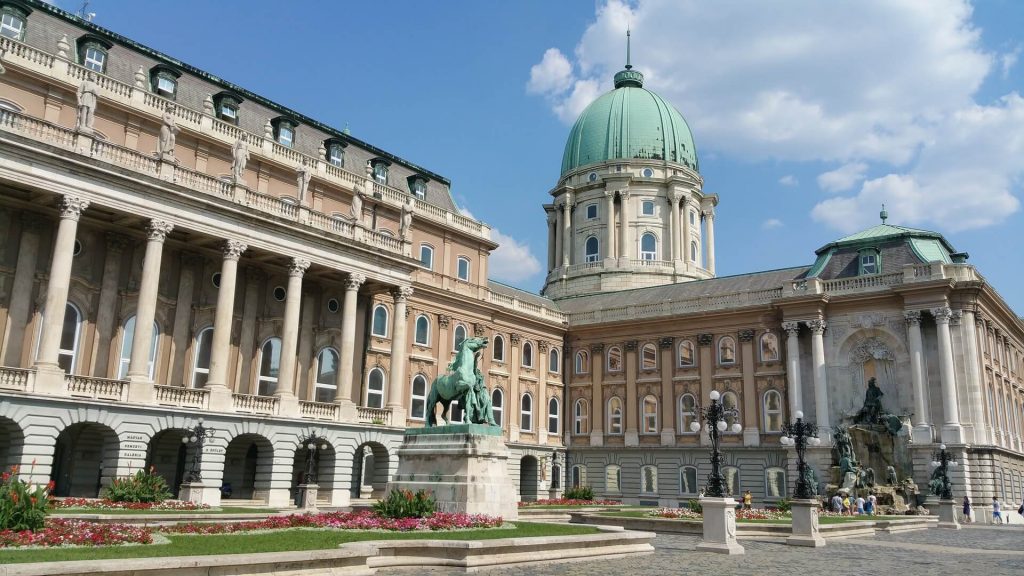 The Fishermen’s Bastion is a Neo-Gothic and Neo-romantic terrace, from which you will have the best view of the city. The bastion was built between 1895 and 1902 to mark the 1000th anniversary of the Hungarian state. By far, the Bastion resembles a castle, with many towers, statues, and small terraces. It is said that its name comes from the Middle Ages era when the city walls were protected by fishermen. You can stroll through the gardens, take pictures with the breathtaking views or visit the Matyas Church, located in the middle of this domain.
The Fishermen’s Bastion is a Neo-Gothic and Neo-romantic terrace, from which you will have the best view of the city. The bastion was built between 1895 and 1902 to mark the 1000th anniversary of the Hungarian state. By far, the Bastion resembles a castle, with many towers, statues, and small terraces. It is said that its name comes from the Middle Ages era when the city walls were protected by fishermen. You can stroll through the gardens, take pictures with the breathtaking views or visit the Matyas Church, located in the middle of this domain.
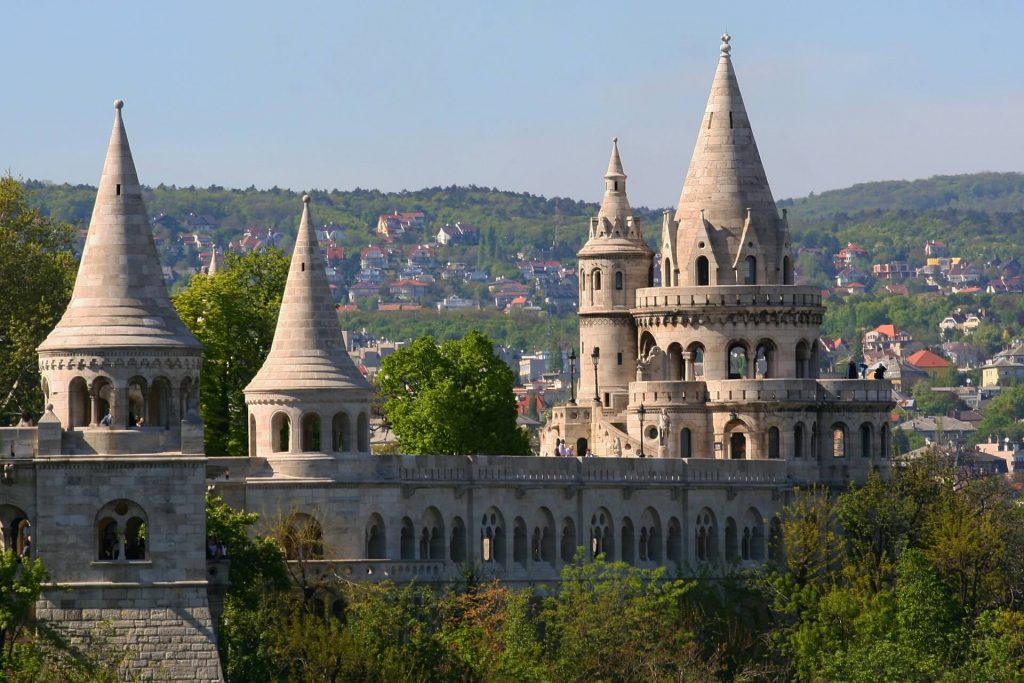 The impressive Heroes Square is largely the work of architect Albert Schickedanz, who has also built the enormous Museum of Fine Arts, which is on the edge of this generous space. Located in front of the Central Park of Budapest and at the end of Andrassy Boulevard, the Heroes Square is part of the UNESCO Universal Heritage. The monument was built in 1896 to commemorate a thousand years since the arrival of the Hungarians in the Carpathian basin. In the middle lies a 36-meter-high column at the top of which is the statue of the Archangel Gabriel, a symbol of the Roman Catholic faith.
The impressive Heroes Square is largely the work of architect Albert Schickedanz, who has also built the enormous Museum of Fine Arts, which is on the edge of this generous space. Located in front of the Central Park of Budapest and at the end of Andrassy Boulevard, the Heroes Square is part of the UNESCO Universal Heritage. The monument was built in 1896 to commemorate a thousand years since the arrival of the Hungarians in the Carpathian basin. In the middle lies a 36-meter-high column at the top of which is the statue of the Archangel Gabriel, a symbol of the Roman Catholic faith.
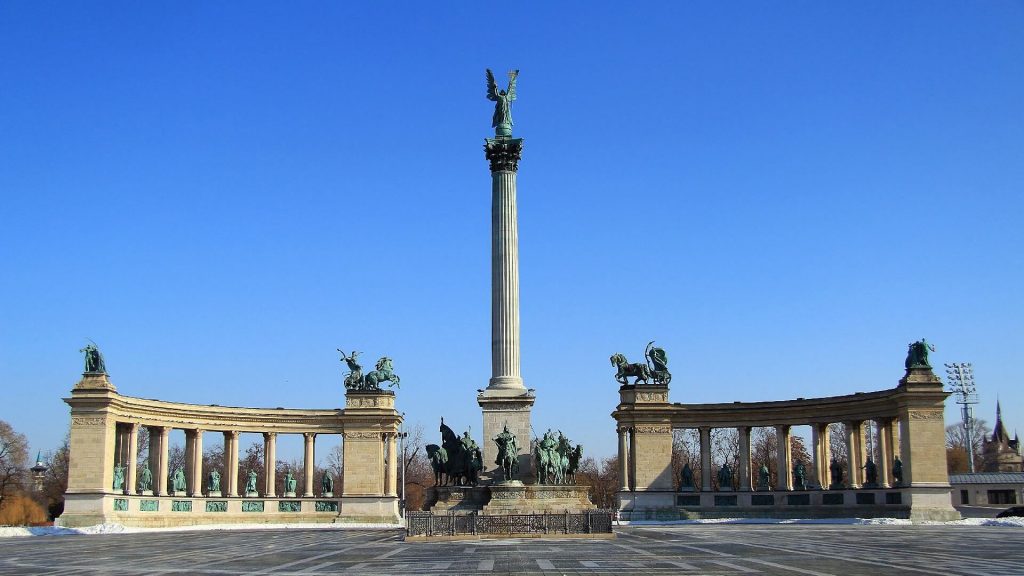 Another interesting attraction of Budapest is Gellért Hill, which is 235 meters high. At the foot of this hill, there are three of the most popular thermal baths in the Hungarian capital, which has attracted tourists since the 13th century. The fortress, raised by the Austrians at the top of the hill in 1852, is also an interesting place to explore. The Statue of Liberty was completed in 1947, in memory of the Soviet soldiers who helped liberate Hungary during the Second World War. A walk in the Jubilee Park should not be missed. Gellért Hill offers also a stunning panoramic view over the city. A fun fact is that the legends say that the witches used to climb the hillside, riding on people.
Another interesting attraction of Budapest is Gellért Hill, which is 235 meters high. At the foot of this hill, there are three of the most popular thermal baths in the Hungarian capital, which has attracted tourists since the 13th century. The fortress, raised by the Austrians at the top of the hill in 1852, is also an interesting place to explore. The Statue of Liberty was completed in 1947, in memory of the Soviet soldiers who helped liberate Hungary during the Second World War. A walk in the Jubilee Park should not be missed. Gellért Hill offers also a stunning panoramic view over the city. A fun fact is that the legends say that the witches used to climb the hillside, riding on people.
 The city park – Városliget is a popular recreation spot for both locals and tourists. This park was set up in the nineteenth century after the design of the famous French landscape artist Nebbion. Over the years there were added a lot of cultural and entertainment facilities, including two enormous art museums, the Botanical and Zoological Park, the Budapest Transportation Museum, Tivoli Park, the Széchenyi Outdoor Spa, and Vajdahunyad Castle, a fairytale castle with an artificial lake which hosting each year a beautiful Christmas market.
The city park – Városliget is a popular recreation spot for both locals and tourists. This park was set up in the nineteenth century after the design of the famous French landscape artist Nebbion. Over the years there were added a lot of cultural and entertainment facilities, including two enormous art museums, the Botanical and Zoological Park, the Budapest Transportation Museum, Tivoli Park, the Széchenyi Outdoor Spa, and Vajdahunyad Castle, a fairytale castle with an artificial lake which hosting each year a beautiful Christmas market.
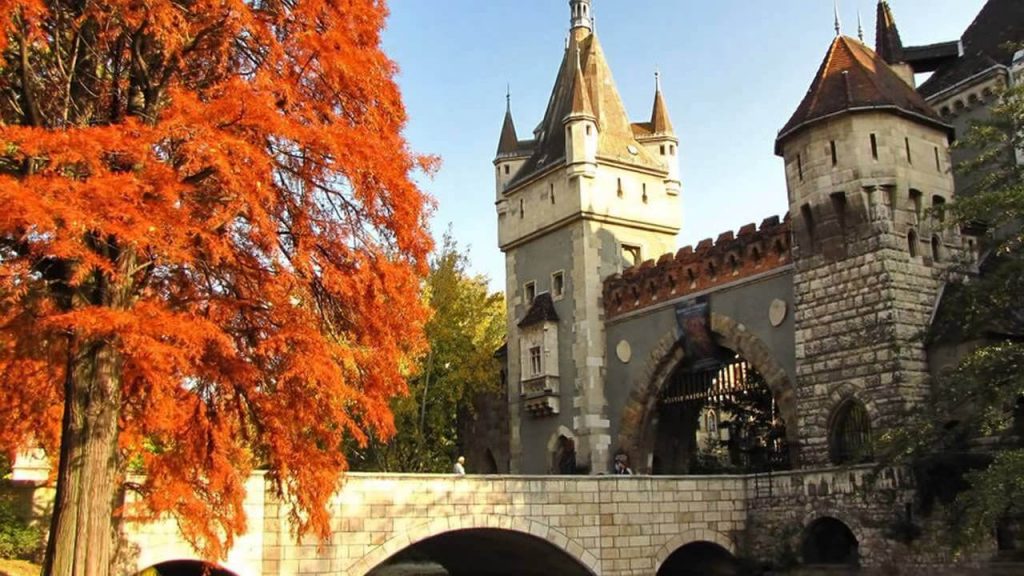 There are three islands in the Danube area of Budapest. Of these, the largest is Csepel Island in the south of the city, followed by the Margaret Island, with many historical attractions and the smallest in size is the Óbuda Island, also known as Hajógyári-Sziget (Shipyard Island). Margaret Island is considered the green heart of Budapest and lies the middle of the Danube, between the Árpád and Margareta bridges. Basically, it is a huge park with gardens, secular trees, and medieval ruins. It also houses a small zoo, two musical fountains, a theatre, and an outdoor cinema, plus several pubs.
There are three islands in the Danube area of Budapest. Of these, the largest is Csepel Island in the south of the city, followed by the Margaret Island, with many historical attractions and the smallest in size is the Óbuda Island, also known as Hajógyári-Sziget (Shipyard Island). Margaret Island is considered the green heart of Budapest and lies the middle of the Danube, between the Árpád and Margareta bridges. Basically, it is a huge park with gardens, secular trees, and medieval ruins. It also houses a small zoo, two musical fountains, a theatre, and an outdoor cinema, plus several pubs.
 Talking about pubs, Budapest has invented some its own form of pubs: the ruin-pubs! You will find most of them in the old Jewish neighborhood in the ruins of abandoned buildings, stores or lots which were re-designed using all sort if recycled objects. There are dozens of such places and each of them offers a one of the kind experience everyone should try while in Budapest.
Talking about pubs, Budapest has invented some its own form of pubs: the ruin-pubs! You will find most of them in the old Jewish neighborhood in the ruins of abandoned buildings, stores or lots which were re-designed using all sort if recycled objects. There are dozens of such places and each of them offers a one of the kind experience everyone should try while in Budapest.
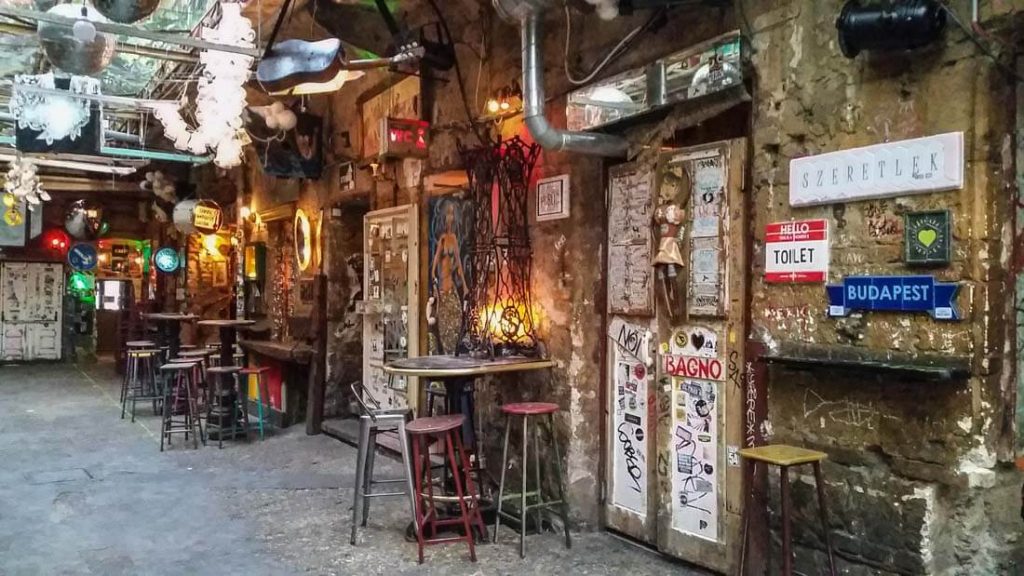 The Budapest gastronomy is an attraction itself: strong and spicy, flavored and tasty. For an authentic traditional cuisine, you should visit the Great Market Hall, where anyone can understand the culinary traditions of the Hungarians: plenty of fruit and vegetable stalls, delicacies, steaks, soups, goulash, crafts, and real souvenirs.
The Budapest gastronomy is an attraction itself: strong and spicy, flavored and tasty. For an authentic traditional cuisine, you should visit the Great Market Hall, where anyone can understand the culinary traditions of the Hungarians: plenty of fruit and vegetable stalls, delicacies, steaks, soups, goulash, crafts, and real souvenirs.
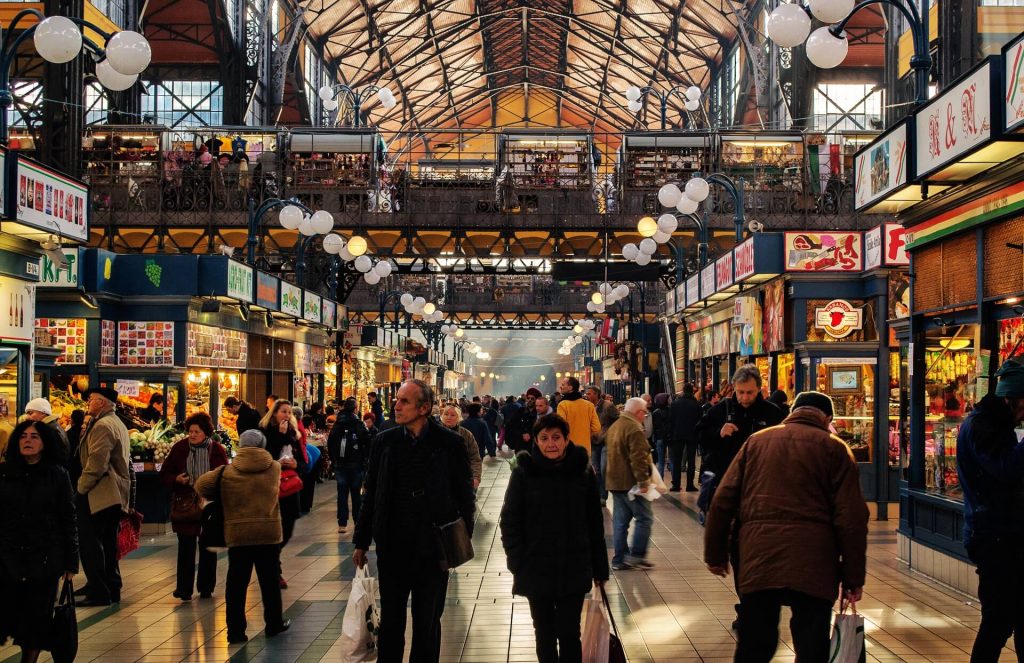
This Golden Triangle of Eastern Europe has so much to offer to any traveler. Once hidden by the Communist’s Iron Curtain, the Eastern Europe destinations unveil their charm and authenticity to anyone who dares to visit them. Ironically, these three cities are some of the safest destinations for traveling, similar and yet so different from the rest of Europe.
Discover the best tailor-made tours of Eastern Europe, designed by Fix Travel experts according to the needs and preferences of each group: theme tours, popular attractions and hidden treasures, art and culture, fun and partying, thrilling experiences and a bit of unexpected, are all part of our special tours! Contact us today and let us design the ultimate Eastern Europe Tour for leisure or business purposes!
#FixTravel #DMCBelgrade #DMCBucharest #DMCBudapest #DMCEasternEurope #DestinationManagementCompany #EasternEuropeTours #UrbanTours #VisitEasternEurope

Leave a Reply